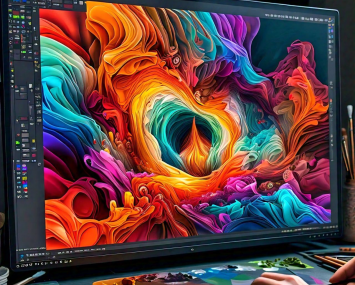
INTRODUCTION:
Photograph control is a fundamental ability in the toolkit of each and every visual architect. Whether you’re working on advertising, digital art, or social media content, or online entertainment content, dominating the strategies of photograph control can raise your work higher than ever. This blog will investigate basic photograph control procedures that each creator should be aware of.
1. Understanding Layers and Covers
Layers and covers are critical to any photograph control project. This is the way to actually use them:
- Layers: Sort out your work by using layers to separate various components of your plan. This takes into account simple changes without affecting different pieces of the picture.
- Covers: Use covers to hide or reveal parts of a layer without deleting them. This non-destructive method is essential for accurate editing.
2. Blending Modes

Blending modes determine how layers interact with each other. Key blending modes include:
- Multiply: Darkens the base color to reflect the blend color.
- Screen: Lightens the base color to reflect the blend color.
- Overlay: Combines Multiply and Screen to increase contrast.
- Soft Light: Gently increases contrast for a subtle effect. Experiment with different blending modes to achieve unique effects in your designs.
3. Choices and Patterns
Making exact choices is vital for photograph control. Strategies include:
- Speedy Determination Apparatus: Effectively select regions with comparable varieties.
- Pen Apparatus: Make exact, adjustable determinations with the Pen Instrument for definite work.
- Refine Edge: Calibrate your determinations to incorporate complicated softness like hair or fur.
4. Change Layers
Change layers permit you to apply variety and apparent changes non-disastrously. Normal changes include:
- Bends: Tweak the brilliance and differentiation.
- Levels: Change the shadows, mid tones, and features.
- Tint/Immersion: Change the varieties in your picture.
- Variety Balance: Change the variety tones in shadows, mid tones, and features.
5. Retouching and Healing
Retouching is essential for creating polished images. Tools include:
- Clone Stamp Instrument: Copy portions of a picture to cover defects.
- Mending Brush Instrument: Mix the region you’re fixing with the encompassing pixels.
- Spot Mending Brush Device: Immediately eliminate weakness and little defects.
6. Adding Practical Shadows and Features
Making practical shadows and features can make your controls more conceivable:
- Shadows: Utilize the Brush Device with a delicate, low-darkness brush to paint shadows. Focus on the light hotspot for consistency.
- Features: Comparatively, utilize a delicate, low-obscurity brush to add features. Change the mixing mode to Delicate Light for a more regular impact.
7. Viewpoint and Distorting
Changing the viewpoint and distorting components can assist with incorporating them accurately into your plan:
- Point of view Twist: Alter the point of view of an item to match the scene.
- Twist Apparatus: Misshape and reshape objects to fit the ideal structure.
8. Color Grading
Color grading can unify the elements of your manipulation and set the mood:
- Color Lookup Tables (LUTs): Apply pre-set color adjustments for a specific look.
- Gradient Maps: Map different colors to the tonal values of your image.
- Selective Color: Fine-tune individual color ranges for precise adjustments.
9. Combining Multiple Images

Combining multiple images into a single composition requires careful attention to detail:
- Match Tones: Guarantee the varieties and tones of every component match the general scene.
- Lighting Consistency: Change the lighting of every component to match the light source in your sythesis.
- Consistent Mixing: Use covers and mixing modes to mix edges and make smooth advances.
10. Adding Surfaces and Overlays
Surfaces and overlays can add intelligence and interest to your plans:
- Surfaces: Apply surfaces to give your picture a particular vibe (e.g., grit, rare).
- Overlays: Use overlays like light holes to upgrade the visual attraction.
CONCLUSION
Commanding photograph control requires practice, creativity, and accurate. By getting it and applying these basic strategies, you can make shocking, experienced quality plans. Whether you’re a beginner or an expert planner, compatible learning and trial and error are essential to working on your abilities in photograph control.
Happy designing!
